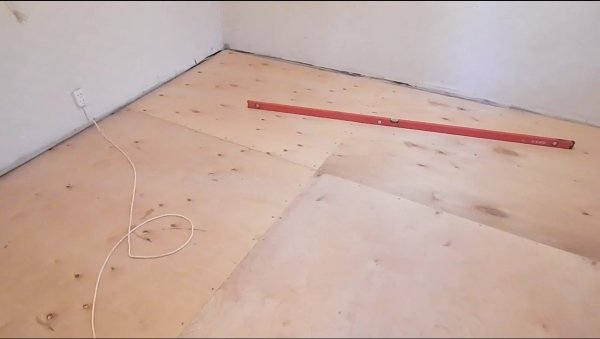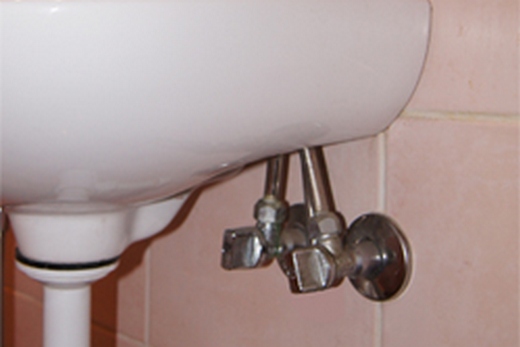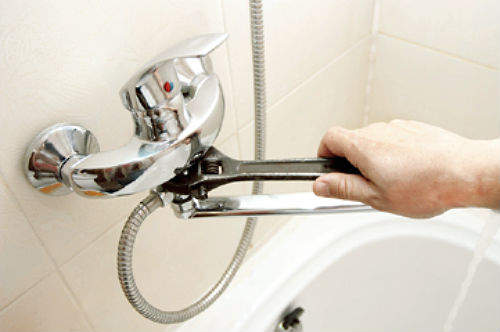Schemes of scorching systems at a private booth: photo, please master
We have prepared for you an overview of the main scorching schemes for private houses, similar characteristics, advantages and disadvantages of the skin system. Let's take a look at the gravitational and primus system of heat transfer, one-pipe and two-pipe wiring diagrams, introducing warm pipes into the scorching system.
Schemes of the scorching system are distinguished by great diversity. Moreover, vibir one of them may be broken up from the structure and the size of the booth, a number of scorching elements, and fallow electricity.
Systems that are aired by the circulation method
In a system with natural circulation, the heat transfer bases are based on gravity, so they are also called gravity or self-fueling. The space of hot water is lower, and it rises up the hill, which is blown with cold water, as if it is drunk in a cauldron, it warms up and the cycle is repeated. The circulation of the primus stove - in the systems of the stasis of the possession, which is pumped.
self-priming system
The self-fueled system does not come out cheap, as if it were a waste of money. Navpaki, as a rule, won cost 2, or even 3 times more expensive for a primus stove. This scheme will require pipes of a larger diameter. For її the robots needed to go away, and the boiler was standing lower behind the radiators, so it would be necessary to install it in a pit or a pit. І start for a normal operation of the system with a different version of the battery, start hot, lower first. To level this peroxide, you need to come in, so that the system can be significantly more expensive:
- budovu bypassiv (additional material and zvaruvalnі roboti);
- balance valves on another version

For wake-up on three surfaces, the system is rotten to go. The flow of heat is “linear”, as it seems maistri. For a double-topped booth, if the other is on top of the top one, it’s the same, like the first, plus the mountain. On the mountain, a expansion tank is installed, a type of boiler installed in a deep socket, a head riser is installed, the bag is suvoro vertical. Like in some places, a riser is brought to a halt, so that the self-fueled robot will die.
From the head riser, horizontal pipelines (sunbeds) are laid out with a chimney, through which the risers are lowered, which are taken into the wrapper and turned into the boiler.
 Self-scorching: 1 - cauldron; 2 - expansion tank; 3 - feed rate; 4 - radiators; 5 - return flow
Self-scorching: 1 - cauldron; 2 - expansion tank; 3 - feed rate; 4 - radiators; 5 - return flow
Self-priming systems are good for living in Russian huts and one-surface modern cottages. If you want the variability of the system to be more expensive, you can’t lie in the past in the presence of life.
If the houses are attic, then the installation of a expansion tank calls for a problem with accommodation - it can be installed directly in the living room. If you don’t live in a bungalow, then heat-carrying is not water, but a native land that doesn’t freeze, so you can take a bet directly into the living zone. In order to escape this, you can carry the tank on the dachas, which will bring it to additional vitrates, or it is necessary to carefully close the top of the tank and lead the gas-inlet tube through the lid between the living quarters.
Primus system
The primus circulation system is visibly possessed, which inflates, and at the same time it is widened even wider. In a short way, it is possible to determine the fallowness in the form of electricity supply, as it is violated by the supplies of an autonomous living generator when the fencing is turned on. With the help of varto, it means great regulation, arrogance, and the ability to save pennies on the organization of scorching in such situations.
 Pump connection: 1 - cauldron; 2 - filter; 3 - circulation pump; 4 - taps
Pump connection: 1 - cauldron; 2 - filter; 3 - circulation pump; 4 - taps
Various schemes for the installation of high-pressure scorching systems
For primus circulation systems, there are a few connection schemes. Let's take a look at the advantages, shortcomings and recommendations of the masters on choosing a scheme for various future systems.
One-pipe system ("Leningradka")
This is the name of Leningradka, foldable at the rozrakhunkas, that cuff at the vikonnі.
 One-pipe pressurized scorching system: 1 - cauldron; 2 - security group; 3 - radiators; 4 - head crane; 5 - expansion tank; 6 - drain; 7 - water pipeline; 8 - filter; 9 - pump; 10 - bucket cranes
One-pipe pressurized scorching system: 1 - cauldron; 2 - security group; 3 - radiators; 4 - head crane; 5 - expansion tank; 6 - drain; 7 - water pipeline; 8 - filter; 9 - pump; 10 - bucket cranes
For such a system, the radiator filling is reduced, which changes the speed of the core in the battery and increases the temperature difference to 20 ° C (water gets very cold). During the subsequent installation of radiators in a single-pipe scheme, there is a large difference in heat transfer temperatures between the first and all advanced radiators. If the system has 10 and more batteries, then the water is extremely cold, cooled to 40-45 ° C. To compensate for the lack of thermal imaging, all radiators, first of all, blame the mother for a larger area of thermal insulation. That is, if you take the first radiator, as a standard of 100% tightness, then the area of the offensive ones should be larger by 10%, 15%, 20%, etc., to compensate for the heat transfer. It’s easy to predict and decompose the necessary space without knowing the future of similar robots, what to lead, let’s say, to the price of the system.

With the classic "Leningrad" the connection of radiators is like a main pipe Ø 40 mm with a bypass Ø 16 mm. With the help of heat transfer, after the radiator turns to the main. A great pardon is sent to the front of the radiators not in transit, but directly from the radiator to the radiator. The best way to choose a pipe system: short pipes and fittings, 2 pieces per battery. However, for such a system, half of the radiators are cold and do not give sufficient heat output. Reason: no change in heat transfer after the radiator from the main pipeline. Exit from the position: increase (significantly) the area of the radiators and the installation of the pressure pump.
Two-pipe collector (promeneva) scorched distribution scheme
With a comb, you can go through two pipes to the skin radiator. The combs should be installed on the right side of the station in the middle of the radiators near the center of the house. In another case, with a significant difference in the length of the pipes to the batteries, there will be an imbalance in the system. Tse vimagatime balancing (nalashtuvannya) with cranes, yak vikonati is difficult to finish. Crimson, the pump of the system in this case may be more tight, in order to compensate for the movement of the balance valves on the radiators.
 Collector scheme: 1 - cauldron; 2 - expansion tank; 3 - supply manifold; 4 - heating radiators; 5 - return manifold; 6 - pump
Collector scheme: 1 - cauldron; 2 - expansion tank; 3 - supply manifold; 4 - heating radiators; 5 - return manifold; 6 - pump
Another shortcoming of the collector system is a large number of pipes.
The third shortfall: the pipes are laid not on the walls, but across the place.
Scheme advantages:
- the day of the day at the pidloz;
- all pipes are of the same diameter, most of them - 16 mm;
- Scheme of z'ednannya nayprostіsha z usіh.
Two-pipe shoulder (dead-end) system
Like a small house (no more than two surfaces, with a total area of up to 200 m 2 ), there is no sense to sporudzhuvati a ride. Teplonosіy dіyde y to the skin radiator. Think it over and install the boiler, so that the "shoulders" are scorched, bulging approximately the same in length and small approximately the same intensity of heat transfer. At the same time, up to treynikiv, so that the flow is added to two shoulders, there are enough pipes Ø 26 mm, after tees - Ø 20 mm, and on the main line to the rest of the radiator in the row and the introduction to the skin radiator - Ø 16 mm. The tees are selected according to the diameters of the pipes to be connected. Such a change in diameter and balance of the system that does not require regulation of the skin radiator is OKremo.
 Vіdminnіst vіdklyuchennі dead-end and passing circuits
Vіdminnіst vіdklyuchennі dead-end and passing circuits
Added advantages of the system:
- minimum number of pipes;
- laying pipes around the perimeter of the site.
Z'ednannya, scho "sewn up" at the pіdlogu, due to buti vykonanі from sewn polyethylene or metaloplastik (metal-polymer pipes). Tse tested, original design.
Two-pipe associated system (Tichelmann loop)
Tse system, yak can not be adjusted after installation. The only thing that reaches the radiators is that the same radiators have the same hydraulic minds: the sum of the lengths of all pipes (supply + return) to the skin radiator is the same.
The scheme for connecting one loop of scorching: one-line (on one static height), with equal-pressure radiators, is even simpler than that. The supply line (crim for supply to the remaining radiator) is made from pipes Ø 26 mm, the return pipeline (crim for leading to the first battery) is also made from pipes Ø 26 mm. Other pipes - Ø 16 mm. The system also includes:
- balancing cranes, as batteries are forced to strain between themselves;
- coolant cranes, like batteries are the same.

Tichelman's loop is more expensive, lower collector of that dead-end system. Design such a system bazhano, as the number of radiators shifts 10 approx. For a smaller number, you can choose a dead-end system, but for the mind of the possibility of a balanced field of “shoulders”.
When choosing a scheme, it is necessary to pay attention to the possibility of laying pipes around the perimeter of the booth, so as not to break open the door. In another turn, the pipe will be blown up to 180 °, leading to the scorching system. In such a rank, on deyakih plots, the order will be laid not two pipes, but three. Such a system is sometimes called a "three-pipe". In this way, the ride becomes transcendentally expensive, cumbersome and varto look at other schemes of scorching, for example, divide the "shoulders" of the dead-end system into sprats.
Connection to the system of scorching water and heat
Most of the heat of the sublog is an addition to the main scorching system, but other than that, they are the only heaters. As a heat generator for warm water and radiators - one and the same boiler, then the pipes are expanded on the basis of the best vikonat on the gate, on the heat carrier, having reached. If the heating system is powered by a nearby heat generator, it is necessary to set the temperature according to the recommendations for obtaining the heat supply.

The connection of the system goes through the collector, which is made up of two parts. The first part is equipped with valve regulating inserts, the other part is equipped with rotameters - that is, vitratomirs of heat transfer. Rotameters are available in two types: with installation at the feed and at the gate. Maistry to please: if you forgot during installation, you bought some kind of rotameter, orient yourself directly to the flow - the supply of the right is to be blamed for going under the seat, opening the valve, and not closing it.
 Connecting a warm pad on the gate: 1 - culvert cranes; 2 - gate valve; 3 - trihodovy zmishuvach; 4 - circulation pump; 5 - bypass valve; 6 - collector; 7 - to the boiler
Connecting a warm pad on the gate: 1 - culvert cranes; 2 - gate valve; 3 - trihodovy zmishuvach; 4 - circulation pump; 5 - bypass valve; 6 - collector; 7 - to the boiler
When planning a scorching system at your booth, you must call everything for and against the skin scheme of the booth itself.


